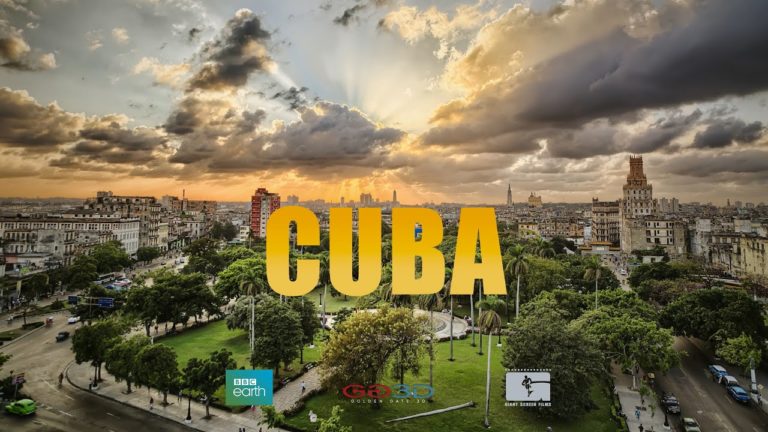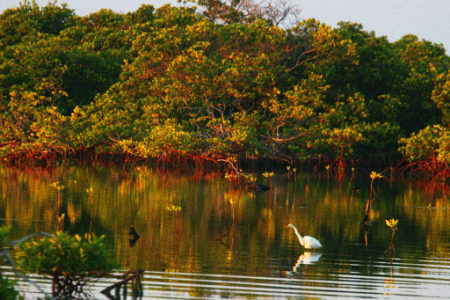
HERMOSOS LUGARES DE LA ISLA DE CUBA. SIEMPRE SERA NUESTRA PATRIA. FOTOS.
Es bien dificil escoger varios lugares de nuestra isla que pudieramos considerar los mas bellos del pais, nuestra isla es un destino fantastico por sus espectaculares playas, monumentos coloniales y parques de gran belleza.
Como todos los cubanos fuera de nuestra querida isla que por diversos motivos desean visitar nuestra patria, aquí les vamos a ofrecer algunos de los lugares que consideramos los más bellos de la que siempre será la “Perla de las Antillas”. “
MATANZAS
Ciudad de la Bahía de Matanzas, en la costa norte cubana entre La Habana y Varadero, llamada la “Atenas de Cuba” por su tradición cultural que se remonta al siglo XIX.
Entre sus monumentos destaca el Teatro Sauto, un hermoso edificio neoclásico inaugurado en 1863, considerado el más funcional y elegante de la isla entre los construidos en el siglo XIX.
El Castillo de San Severino es una fortaleza del siglo XVIII, el único edificio que se conserva de la época de la fundación de la ciudad. Alberga el Museo Nacional de la Ruta del Esclavo, inaugurado en 2009 y dedicado al período del tráfico de africanos hacia la isla y América.
Cerca de la ciudad se encuentra la Cueva de Saturno, una cueva-cenote con estalactitas y peces ciegos.
Las Cuevas de Bellamar son otro lugar de interés por sus estalactitas y estalagmitas. La famosa orquesta Sonora Matancera fue fundada en Matanzas en la década de 1920.
LA HABANA VIEJA
La Habana Cuba era la ciudad más cosmopolita de la América española. Su centro histórico aún guarda los testimonios del antiguo esplendor colonial de la capital de la isla.
En los 5 km 2 de La Habana Vieja aún quedan vestigios de las murallas que protegían a la ciudad de los ataques de piratas y enemigos de España, así como numerosos edificios históricos como la catedral, el castillo de los Tres Reyes del Morro, la fortaleza de San Carlos de la Cabaña y el Gran Teatro de La Habana.
Otros emblemas del centro histórico de La Habana son el Edificio Bacardí, sede del famoso ronero antes del terremoto que hizo sucumbir a la isla en 1959. Allí se puede visitar Floridita, un bar inaugurado en 1817 donde Ernest Hemingway solía tomar daiquiris; y La Bodeguita del Medio, el bar favorito del célebre escritor para disfrutar del mojito.
VARADERO
Una de las hermosas características de Cuba es que se centra en las hermosas playas de la isla, encabezadas por las de Varadero.
Esta localidad costera del norte de Cuba cuenta con un litoral de más de 20 km de playas, con hoteles a pie de playa pertenecientes a grandes cadenas globales.
Varadero es un pueblo de 22 mil habitantes con museos y galerías de arte. Pero entre los lugares más hermosos de Varadero se encuentran sus playas de aguas cristalinas y arenas finas y suaves, entre las que se encuentran Playa Azul, Playa Paradisus, Playa Caleta, Playa Larga y Playa Coral.
SANTIAGO DE CUBA
El primer alcalde de esta ciudad cubana fue Hernán Cortés, desde donde partió hacia la conquista de México.
La Basílica y Santuario Nacional de la patrona de Cuba, la Virgen de la Caridad del Cobre, se encuentra a 19 km de Santiago de Cuba.
El Castillo de San Pedro de la Roca, frente al mar, es una fortaleza del siglo XVII declarada Patrimonio de la Humanidad en 1998.
A 20 km de la ciudad se encuentra el Parque Baconao, un área nacional protegida de 84.600 hectáreas y Reserva Mundial de la Biosfera.
Entre sus bellezas naturales se encuentra la Gran Piedra, una enorme roca de más de 60 mil toneladas y 459 escalones para ascenderla.
JARDINES DEL REY
Conjunto de cayos de la parte oriental del Archipiélago Sabana-Camagüey, en la costa centro-norte de Cuba. Abarcan territorios de las provincias de Camagüey, Ciego de Ávila, Sancti Spíritus y Villa Clara y cuentan con algunas de las mejores playas de Cuba, de aguas cristalinas y arena fina.
Los cayos principales son Guillermo, Coco, Romano, Cruz, Guajaba, Sabinal y Santa María.
En Cayo Guillermo, perteneciente a la Provincia de Ciego de Ávila, se encuentra la Playa El Pilar, una de las más famosas de la isla. Es una playa casi virgen rodeada de sinuosas dunas de hasta 16 metros de altura.
La playa fascinó a Ernest Hemingway, quien le puso el nombre de Pilar, al igual que su barco. Tiene arena fina y clara y aguas tranquilas de color azul turquesa. Tiene un arrecife de coral que lo convierte en un acuario natural para disfrutar de la colorida y variada fauna marina.
ARCHIPIÉLAGO DE LOS JARDINES DE LA REINA
Cristóbal Colón quedó tan impresionado con la belleza de este archipiélago cubano que lo llamó Jardines de la Reina, en homenaje a la soberana Isabel La Católica. El laberinto de más de 600 cayos que lo forman se extiende por más de 130 km al sur de la costa de Camagüey.
Los claves principales son Caguamas, Las Doce Leguas, Cinco Balas, Algodón Grande, Anclitas, Pingues, Ana María, Granada, Bretón y Caballones.
El archipiélago es un parque nacional de 2.170 km2, siendo una de las áreas protegidas más grandes de Cuba. Tiene grandes arrecifes de coral con colonias de esponjas. Los cayos suman kilómetros de playas con amplias franjas de finas y limpias arenas y aguas transparentes. Allí aún se pueden observar vestigios del mundialmente conocido coral negro, en peligro de extinción por su uso en joyería.

BEAUTIFUL PLACES ON THE ISLAND OF CUBA. ALWAYS WILL BE OUR NATION. PHOTOS.
It is very difficult to choose several places on our island that we could consider the most beautiful in the country, our island is a fantastic destination for its spectacular beaches, colonial monuments and parks of great beauty.

Like all Cubans outside of our beloved island for various reasons who would like to visit our homeland, here we are going to offer you some of the places that we consider to be the most beautiful of what will always be the “Pearl of the Antilles.”
MATANZAS
City in the Bay of Matanzas, on the northern Cuban coast between Havana and Varadero, called the “Athens of Cuba” for its cultural tradition that dates back to the 19th century.
Among its monuments, the Sauto Theater stands out, a beautiful neoclassical building inaugurated in 1863, considered the most functional and elegant on the island among those built in the 19th century.
The Castillo de San Severino is an 18th-century fortress, the only building that has survived from the time of the founding of the city. It houses the National Museum of the Slave Route, inaugurated in 2009 and dedicated to the period of African trafficking to the island and America.
Near the city is the Cueva de Saturno, a cave-cenote with stalactites and blind fish.
The Bellamar Caves are another place of interest for their stalactites and stalagmites. The famous Sonora Matancera orchestra was founded in Matanzas in the 1920s.
OLD HAVANA
Havana Cuba was the most cosmopolitan city in Spanish America. Its historic center still keeps the testimonies of the old colonial splendor of the capital of the island.
In the 5 km 2 of Old Havana there are still vestiges of the walls that protected the city from attacks by pirates and enemies of Spain, as well as many historical buildings such as the cathedral, the castle of the Three Kings of Morro, the fortress of San Carlos de la Cabaña and the Great Theater of Havana.
Other emblems of Havana’s historic center are the Bacardi Building, headquarters of the famous rum maker before the earthquake that made the island succumb in 1959. There you can visit Floridita, a bar opened in 1817 where Ernest Hemingway used to drink daiquiris; and La Bodeguita del Medio, the favorite watering hole of the famous writer to enjoy the mojito.
VARADERO
One of the beautiful characteristics of Cuba is that it focuses on the beautiful beaches of the island, led by those of Varadero.
This coastal town in northern Cuba has a coastline of more than 20 km of beaches, with hotels at the foot of the beach belonging to large global chains.
Varadero is a town of 22 thousand inhabitants with museums and art galleries. But among the most beautiful places in Varadero are its beaches with crystal clear waters and fine and soft sands, among which are Playa Azul, Playa Paradisus, Playa Caleta, Playa Larga, and Playa Coral.

SANTIAGO DE CUBA
The first mayor of this Cuban city was Hernán Cortés, from where he left for the conquest of Mexico.
The Basilica and National Shrine of the patron saint of Cuba, the Virgen de la Caridad del Cobre, is located 19 km from Santiago de Cuba.
The Castle of San Pedro de la Roca, facing the sea, is a 17th-century fortress declared a World Heritage Site in 1998.
20 km from the city is the Baconao Park, a national protected area of 84,600 hectares and a World Biosphere Reserve.
Among its natural beauties is the Great Stone, a huge rock of more than 60 thousand tons and 459 steps to ascend it.
KING’S GARDENS
Group of cayos in the eastern part of the Sabana-Camagüey Archipelago, on the north-central coast of Cuba. They cover territories in the provinces of Camagüey, Ciego de Ávila, Sancti Spíritus, and Villa Clara and have some of the best beaches in Cuba, with crystal clear waters and fine sand.
The main cayos are Guillermo, Coco, Romano, Cruz, Guajaba, Sabinal and Santa María.
In Cayo Guillermo, belonging to the Province of Ciego de Ávila, is El Pilar Beach, one of the most famous on the island. It is an almost virgin beach surrounded by winding dunes up to 16 meters high.
The beach fascinated Ernest Hemingway, who gave it the name of Pilar, the same as his boat. It has fine, clear sand and calms turquoise blue waters. It has a coral reef that makes it a natural aquarium to enjoy the colorful and varied marine fauna.
ARCHIPELAGO OF THE GARDENS OF THE QUEEN
Christopher Columbus was so impressed with the beauty of this Cuban archipelago that he named it, Jardines de la Reina, in homage to the sovereign Isabel La Católica. The labyrinth of more than 600 keys that form it extends for more than 130 km to the south of the coast of Camagüey.
The main cayos are Caguamas, Las Twelve Leguas, Cinco Balas, Algodón Grande, Anclitas, Pingues, Ana María, Granada, Bretón and Caballones.
The archipelago is a national park of 2,170 km2, being one of the largest protected areas in Cuba. It has large coral reefs with colonies of sponges. The keys add kilometers of beaches with wide strips of fine and clean sands and transparent waters. There you can still see vestiges of the world-renowned black coral, in danger of extinction due to its use in jewelry.

Agencies/ Wiki/ CubaBellaHist./ Extractos/ Excerpts/ Internet Photos/ Arnoldo Varona/ www.TheCUbanHistory.com

THE CUBAN HISTORY, HOLLYWOOD.




 HERMOSOS Lugares de la Isla de Cuba. Siempre sera Nuestra Patria. PHOTOS * BEAUTIFUL PLACES OF THE ISLAND OF CUBA. ALWAYS WILL BE OUR NATION. PHOTOS.
HERMOSOS Lugares de la Isla de Cuba. Siempre sera Nuestra Patria. PHOTOS * BEAUTIFUL PLACES OF THE ISLAND OF CUBA. ALWAYS WILL BE OUR NATION. PHOTOS.